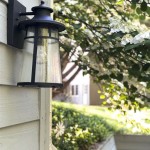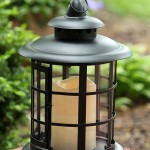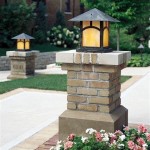How To Get Rid Of Mold In Outdoor Cushions
Outdoor cushions, designed for comfort and aesthetic appeal in patios, decks, and gardens, are unfortunately susceptible to mold growth. This is due to the constant exposure to moisture, humidity, and organic debris, creating an ideal environment for mold spores to proliferate. Once mold takes hold, it can not only damage the cushion material but also pose health risks, emitting allergens and irritants into the air. Understanding the factors contributing to mold growth and implementing effective cleaning and prevention strategies is crucial for maintaining the longevity and safety of outdoor cushions.
Mold thrives in damp, poorly ventilated environments. Outdoor cushions, often made of porous materials, readily absorb moisture from rain, dew, and humidity. Organic matter such as leaves, pollen, and dirt accumulate on the cushion surface, providing a food source for mold. The combination of moisture, organic matter, and warm temperatures creates a breeding ground for various types of mold. Prolonged exposure to these conditions allows mold spores to penetrate deep into the cushion fibers, making complete removal a challenging task. Regularly inspecting outdoor cushions for signs of mold and addressing the issue promptly is vital to prevent extensive damage and health concerns.
Identifying Mold and its Potential Risks
Identifying mold growth on outdoor cushions is the first step in addressing the problem. Mold typically appears as discolored spots or patches, ranging in color from white and gray to green, brown, or black. The presence of a musty or earthy odor is another indicator of mold. It's important to differentiate mold from mildew, another type of fungus that often affects outdoor fabrics. Mildew usually appears as a white or gray powdery coating on the surface and is generally easier to remove than mold, which penetrates deeper into the material.
Exposure to mold can lead to various health problems, particularly for individuals with allergies, asthma, or compromised immune systems. Mold spores release allergens and irritants into the air, which can trigger allergic reactions such as sneezing, coughing, skin rashes, and watery eyes. Inhaling mold spores can exacerbate asthma symptoms and trigger respiratory infections. Prolonged exposure to high levels of mold can lead to more severe health issues. Therefore, it is essential to take precautions when cleaning mold-infested cushions, such as wearing gloves, a mask, and eye protection, and ensuring adequate ventilation.
Ignoring mold growth on outdoor cushions not only poses health risks but also accelerates the deterioration of the cushion material. Mold feeds on organic materials, gradually breaking down the fibers of the fabric and foam. This can lead to discoloration, weakening, and eventual disintegration of the cushion. Moreover, widespread mold growth can be difficult and costly to remove, potentially requiring professional cleaning or even replacement of the cushions. Regular maintenance and prompt attention to mold issues are essential for preserving the value and lifespan of outdoor furniture.
Effective Cleaning Methods for Mold Removal
Several effective cleaning methods can be employed to remove mold from outdoor cushions. The choice of method depends on the severity of the mold growth and the type of cushion material. Prior to attempting any cleaning, it is crucial to consult the manufacturer's instructions for the cushions to avoid damaging the fabric or voiding any warranties. Always test any cleaning solution on a small, inconspicuous area of the cushion first to ensure it does not cause discoloration or damage.
A simple solution of soap and water can be effective for removing light mold growth. Mix a mild dish soap with warm water and apply the solution to the affected area using a soft brush or sponge. Gently scrub the mold stains, working in a circular motion. Rinse the cushion thoroughly with clean water to remove any soap residue. Allow the cushion to air dry completely in direct sunlight, as sunlight has natural disinfecting properties. This method is suitable for cushions made of durable, washable fabrics.
For more stubborn mold stains, a bleach solution may be necessary. Mix one part bleach with ten parts water. Apply the solution to the moldy area using a spray bottle or sponge. Allow the solution to sit on the stain for 10-15 minutes. Rinse the cushion thoroughly with clean water and allow it to air dry completely in direct sunlight. It's imperative to use bleach with caution, as it can discolor or damage certain fabrics. Always test the bleach solution on a small, hidden area of the cushion before applying it to the entire surface. Additionally, ensure adequate ventilation when using bleach and wear protective gear such as gloves, a mask, and eye protection.
An alternative to bleach is vinegar, a natural disinfectant and deodorizer. White vinegar can be used undiluted to kill mold on outdoor cushions. Apply vinegar to the moldy area using a spray bottle or sponge, and let it sit for at least an hour. Wipe away the vinegar with a clean cloth and allow the cushion to air dry completely in direct sunlight. Vinegar is a gentler option than bleach and is less likely to damage fabric. However, it may have a strong odor, which will dissipate as the cushion dries.
For cushions with removable covers, laundering the covers can be an effective way to remove mold. Wash the covers in hot water with a detergent that contains bleach or a mold-killing agent. Ensure the washing machine is properly loaded to allow for adequate cleaning. Dry the covers in a hot dryer or hang them outside to air dry in direct sunlight. Before replacing the covers on the cushions, ensure that both the covers and the cushion inserts are completely dry to prevent further mold growth.
Preventive Measures to Minimize Mold Growth
Preventing mold growth is always preferable to dealing with an existing infestation. Several preventative measures can be implemented to minimize the risk of mold forming on outdoor cushions. These measures focus on reducing moisture, improving ventilation, and maintaining cleanliness.
One of the most effective ways to prevent mold growth is to store outdoor cushions properly when they are not in use. During periods of rain or high humidity, bring the cushions indoors or store them in a waterproof container. If indoor storage is not feasible, cover the cushions with waterproof covers to protect them from moisture. Ensure that the covers are breathable to allow air circulation and prevent condensation, which can contribute to mold growth.
Improving ventilation around outdoor cushions is crucial for preventing mold. Avoid placing cushions directly on the ground, as this restricts airflow and allows moisture to accumulate. Use furniture with slatted seats or elevated platforms to allow air to circulate freely around the cushions. Regularly fluff and rotate the cushions to promote even drying and prevent moisture from becoming trapped inside.
Regular cleaning and maintenance are essential for preventing mold growth. Regularly vacuum or brush off any dirt, leaves, or debris from the cushion surface. Wipe down the cushions with a damp cloth and mild soap solution to remove any spills or stains. Address any water stains promptly to prevent mold from taking hold. Consider using a fabric protector spray specifically designed for outdoor cushions to repel water and prevent stains. These sprays create a barrier that inhibits mold growth and makes cleaning easier.
Choosing the right type of outdoor cushions can also help minimize mold issues. Cushions made from water-resistant or quick-drying materials are less likely to retain moisture and develop mold. Fabrics such as solution-dyed acrylic, olefin, and polyester are known for their durability, water resistance, and resistance to mold and mildew. Avoid cushions made from natural fibers such as cotton, which are more susceptible to moisture absorption and mold growth.
Regularly inspect outdoor cushions for any signs of mold or mildew. Early detection allows for prompt treatment and prevents the problem from escalating. Pay particular attention to areas that are frequently exposed to moisture, such as seams, corners, and the underside of the cushions. If mold is detected, clean the cushions immediately using one of the methods described above. By implementing these preventative measures, the risk of mold growth on outdoor cushions can be significantly reduced, ensuring their longevity and maintaining a healthy outdoor environment.

How To Remove Mildew Stains From Outdoor Cushions

How To Remove Mildew Stains From Outdoor Cushions

How To Remove Mildew Stains From Outdoor Cushions

How To Remove Mildew From Outdoor Furniture Cushions

Cleaning Mrs Hinch Fans Share How To Remove Mould From Outdoor Cushion Covers Express Co

How To Remove Mildew Stains From Outdoor Cushions

5 Ways To Remove Mold Mildew From Outdoor Cushions Prudent Reviews

Wet Forget Outdoor Mildew Remover For Patio Furniture Life S Dirty Clean Easy

How To Rid Outdoor Cushions Of Mildew

How To Remove Mildew Stains From Outdoor Cushions







